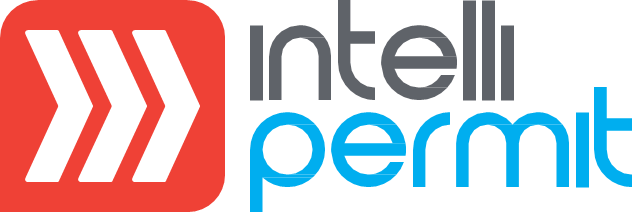Safe systems of work and the permit to work
Risk is inherent in any manufacturing process. To ensure that all work on the plant takes place safely this inherent risk needs to be managed throughout the full lifecycle of the plant. Tools such as hazard and operability studies (HAZOP) are used during design to identify hazards and to mitigate any identified risk before the plant is built. During construction, strict adherence to the specifications and relevant engineering standards is needed to ensure that what is built is in line with the safety design. Any change to the design needs to be carefully controlled and assessed for its impact on the overall risk profile of the operation.
In this article we will take a look at the concept of a “Safe System of Work”, and how this relates to overall operational risk management and the permit to work.
Operational Risk
Once the plant is running management of risk becomes an ongoing process. Any improvements or other changes to equipment or procedures need to be carefully weighed up from a risk perspective. “Operational risk management” refers to the overall management and control of risk during the life of the running plant.
The concept of risk management from a safety perspective is relatively simple. It involves identifying hazards, performing a risk assessment, making risk-related decisions, the implementation of control measures, and the monitoring of these control measures to ensure work takes place safely. Because the consequences of an accident can be severe, resulting in injury or loss of life, there needs to be a very low or even zero tolerance to any safety-related risk.
Notwithstanding all the design effort to try and reduce risk, there is always an element of residual risk in a typical industrial plant. No amount of barriers or safeguards can make a job 100% safe. Aside from the inherent risk in the design, operational risk can be increased to unacceptable levels as a result of human error.
A safe system of work
To manage the residual risk when doing work on the plant a safe system of work needs to be in place. A safe system of work ensures that all potentially dangerous work is properly planned, that the people concerned are trained and competent to do the job, and that all hazards are understood. Furthermore, all control measures must be in place and all remaining (residual) risks are fully understood. At the heart of a system of safe work is a job risk assessment (JRA) that considers the work to be done and identifies all hazards and all control measures in order to work safely.
Typically a job risk assessment follows the following 5 steps:
- Identify hazards associated with each job step.
- Consider who might be harmed and how.
- Decide on any precautions that need to be in place to work safely.
- Document and communicate the above with all relevant people.
- Track and monitor the work to ensure that it takes place safely.
The job risk assessment is not necessarily a single event. Sometimes a JRA is performed to assess the inherent risk before any controls are identified, and then a second JRA is done after the controls are in place to assess and manage the residual risk.
A job risk assessment forms an integral part of a system of safe work. As far as possible the JRA should be done in the field at the actual work site to ensure that all possible hazards are identified. Any other work taking place in adjacent areas needs to be identified and any new risks from these worksite interactions need to be properly understood and minimised.
Coordination of work and communications
The process operators need to work closely with the maintenance crews when any work takes place on the plant. The plant needs to be prepared before the job starts. This might involve shutting down equipment, isolating energy sources, and draining/purging the process of hazardous chemicals. Typically this preparation is done in advance of any planned maintenance activity.
The number of people involved, communication challenges, the length of each job from preparation to execution, and the hazardous nature of plants can all result in human error. Communication is the key, ensuring that everyone concerned is fully aware of what needs to be done. Continuous monitoring of the job is also important, especially as shifts change and new people get involved. All assumptions about what the previous shift did or did not do need to be checked thoroughly.
Clear, unambiguous accountability for safe work needs to be delegated to the right people who need to fully understand their responsibility.
When barriers or controls fail
Many major industrial accidents happen as a result of a chain of events where one minor control measure fails. Often, sometimes insidiously, other controls fail at the same time. Eventually, all the factors line up and an incident occurs. During the subsequent emergency response, the risk is further elevated while the system is brought back under control – secondary incidents can then take place. These secondary incidents can be more severe than the initial incident. Techniques such as bowtie analysis can be used to identify causal relationships in a high-risk situation and identify the multiple barriers (e.g. precautions) that must all be in place to prevent an incident.
The permit to work and system of safe work
The permit to work is an essential tool to ensure that the system of safe work is properly adhered to. It ensures that:
- All hazards relating to the job are identified.
- All precautions are in place.
- The preparation of the plant is complete and properly communicated.
- People are competent and trained to perform the work.
- Job risk assessments are completed and controls are managed throughout the job.
- Accountability is properly delegated to the right, qualified people.
- The boundaries of the job are enforced, including the time during which the work can take place and what happens when there is a change of personnel or shifts.
- The impact of any other work taking place in the area is considered (any simultaneous operations or “SIMOPS”).
The permit is a document that aligns the various teams involved in every job as to the safety aspects and as such, it also serves a vital communication role. A permit does not exist in isolation, there is always a comprehensive safety procedure associated with the permit process. Permits differ in detail and format between companies but they all in essence enforce and control a safe system of work.
Computer-based safety systems
It is of course possible to implement a safe system of work using a well-designed manual system. Most organisations are however moving towards computer-based systems because of their many advantages. An electronic permit to work system can ensure that the right procedures are being followed as efficiently as possible and without prejudicing safety. Computer systems can be programmed to watch out for situations that could lead to additional risks, such as interactions between work taking place in the same area. Computer systems can also ensure that real-time alerts and feedback between the worksite and the control room take place properly thereby ensuring a high level of visibility of work in progress. Computer systems are easier to audit and the data in the system can often reveal underlying weaknesses in the procedures.
About IntelliPERMIT
IntelliPERMIT is a computer-based permit-to-work system that incorporates all the above best safe system of work practices to minimise risk and ensure that people work safely. Due to its flexible design that works the way you do in your business it has proven to be very effective across multiple industries around the world. Please contact our team to learn how IntelliPERMIT can support you in implementing a robust safe system of work in your plant.
Continue Reading
Q&A with IntelliPERMIT Consultant Lungelo Majozi
Explore the advantages of electronic permit to work (e-PTW) systems over paper methods, from faster investigations to specific hazard management. Learn how e-PTW enhances safety, prevents redundant isolations, and ensures accountability. Discover future trends like 3D modeling. IntelliPERMIT automates tasks, improves communication, and reduces costs, making workplaces safer and more efficient.
Powering Safety Innovations: An Exclusive Q&A with IntelliPERMIT Consultant Shirley Breytenbach
IntelliPERMIT transforms permit management with streamlined processes, competency-based approvals, and real-time visibility. Ensure regulatory compliance, enhance worker safety, and boost operational efficiency. The system offers seamless integration, empowering organisations to proactively mitigate safety risks.
Safety Software Implementation Success : An Exclusive Q&A with IntelliPERMIT Consultant Henry Boshoff
Unlock safety software success with IntelliPERMIT: Prioritise key features, secure user buy-in through change management, and foster collaboration. Set measurable goals, leverage incident data for proactive decisions, and ensure intuitive search capabilities. Streamline report generation and simplify scheduling and management of training, drills, toolbox talks, and audits. Overcome adoption challenges by addressing pain points and customizing the software. Enhance user adoption with automation and user-friendly interfaces. Evaluate safety software providers based on knowledge, experience, and adherence to standards—IntelliPERMIT excels. Easily integrate with existing systems through standard APIs. Opt for web-based software for accessibility and usability. IntelliPERMIT enhances safety practices and compliance.



